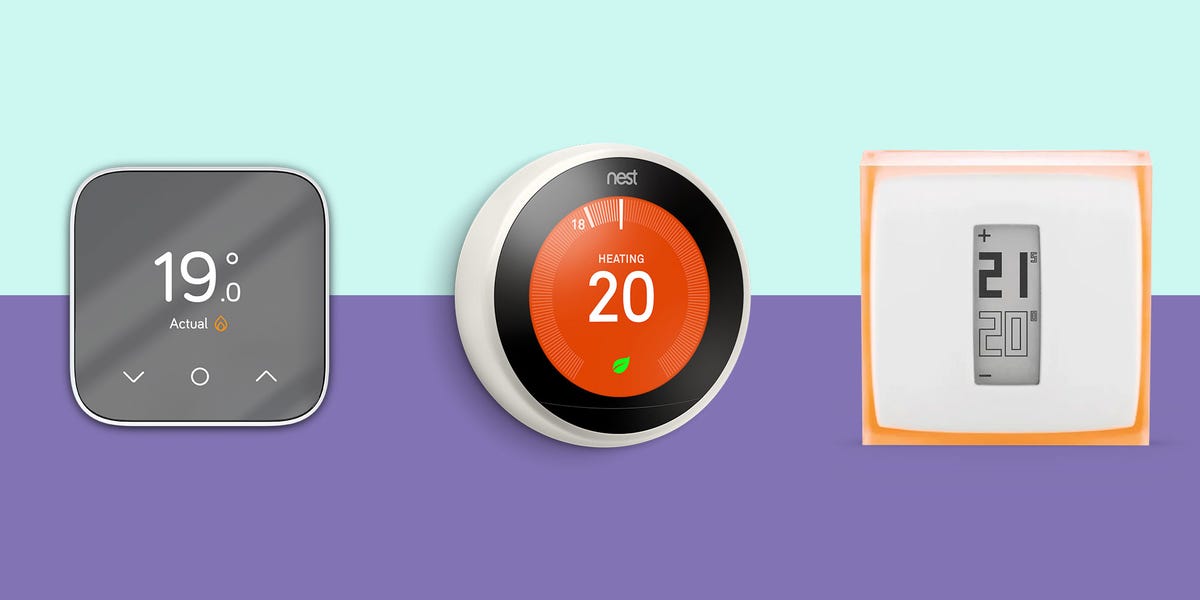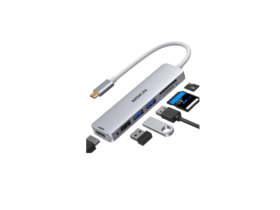The best non smart thermostat is a manual non-programmable thermostat, which is a simple option with buttons on the front for easy temperature adjustment. It is a cost-effective choice for those who do not need the advanced features of a smart thermostat and prefer a more straightforward solution.
Manual thermostats are commonly used in older homes and offer a reliable way to control heating and cooling. They do not require professional installation and are easy to operate without the need for complex software or touchscreen display panels. If you are looking for a best non smart thermostat that is user-friendly and does not come with unnecessary expenses, a manual non-programmable thermostat is the way to go.
Understanding Smart Thermostats
Smart thermostats have gained immense popularity in recent years due to their ability to provide convenient temperature control and energy efficiency. These innovative devices allow homeowners to remotely manage and adjust their home’s temperature settings using their smartphones or voice assistants. But before diving into the advantages and disadvantages of smart thermostats, let’s first understand what they are and how they work.
Advantages Of Smart Thermostats
Smart thermostats offer several benefits that make them an attractive choice for homeowners:
- Convenient Temperature Control: With a smart thermostat, you can easily adjust the temperature of your home from anywhere, allowing you to create a comfortable environment before you arrive.
- Energy Efficiency: Smart thermostats utilize advanced algorithms and sensors to optimize energy consumption based on your daily routine, resulting in lower energy bills and reduced environmental impact.
- Learning Capabilities: These devices can learn your temperature preferences over time and automatically adjust the settings to suit your needs, saving you time and effort.
- Integration with Other Smart Home Devices: Smart thermostats can be integrated with other smart home devices, such as smart lights and security systems, allowing you to create a cohesive and automated home environment.
Disadvantages Of Smart Thermostats
While smart thermostats offer numerous advantages, they also come with a few drawbacks:
- Higher Price Tag: Smart thermostats tend to be more expensive than their traditional counterparts, making them a less affordable option for some homeowners.
- Complex Installation: Some smart thermostats require professional installation, adding an extra cost and potential inconvenience.
- Learning Curve: Getting familiar with the software and touchscreen display of a smart thermostat might take some time and effort, especially for those who are not tech-savvy.
In conclusion, while smart thermostats offer many benefits, they may not be a necessary investment for everyone. It ultimately depends on your specific needs and budget. However, if you value convenience, energy efficiency, and the ability to integrate with other smart devices, a smart thermostat could be a worthwhile addition to your home.

Credit: www.nytimes.com
Benefits Of Best Non smart Thermostats
The best Non smart thermostats offer several advantages, making them a reliable and practical choice for maintaining indoor comfort levels. From cost-effectiveness to ease of use, these non-smart devices have their own set of benefits that cater to specific preferences and needs.
Cost-effectiveness
The best Non smart thermostats are a cost-effective solution for controlling indoor temperatures. They are typically more affordable than their smart counterparts, making them an attractive option for budget-conscious homeowners. Additionally, non-smart thermostats often require minimal installation and maintenance costs, further contributing to their economical appeal.
Ease Of Use
The ease of use is a key advantage of the best non smart thermostats. These devices are straightforward and intuitive, offering simple controls that are easy for anyone to understand and operate. With manual adjustments for temperature settings, users can easily manage their heating and cooling preferences without the complexities of smart technology.
Manual Thermostats
When it comes to home temperature control, manual thermostats have been a reliable and cost-effective option for decades. Unlike smart thermostats that offer fancy features and connectivity, manual thermostats are straightforward and easy to use.
Whether you live in an older home or simply prefer a no-frills approach to heating and cooling, manual thermostats can be a practical choice. Let’s explore the characteristics of manual thermostats and their suitability for older homes.
Characteristics Of Manual Thermostats
Manual thermostats are simple devices that allow homeowners to manually adjust the temperature settings in their homes. They typically feature a basic interface with clear temperature controls, making it easy for users to set their desired indoor climate.
These non-programmable thermostats do not have any advanced scheduling or learning capabilities. Instead, they rely on manual input from the user to regulate the temperature.
Suitability For Older Homes
Manual thermostats are well-suited for older homes that may not have the wiring or infrastructure to support smart thermostat installations. The straightforward nature of manual thermostats makes them compatible with a wide range of heating and cooling systems, including older HVAC setups.
For homeowners in older properties, manual thermostats offer a reliable and affordable way to control indoor temperature without the need for complex installation or compatibility concerns.
Programmable Thermostats Vs. Smart Thermostats
Looking for a simple and cost-effective option for your home? Consider a non-smart thermostat. These manual thermostats are easy to use and adjust, making them a great choice for those who don’t need advanced features.
Differences In Functionality
When comparing programmable thermostats to smart thermostats, one of the key differences lies in their functionality. Programmable thermostats allow you to set specific temperature schedules for different times of the day, allowing you to customize your home’s temperature based on your daily routine. This means that you can have the thermostat automatically lower the temperature during the day when everyone is at work or school, and then have it raise the temperature in the evening when everyone is back home.
Smart thermostats, on the other hand, take things a step further. With built-in sensors and advanced algorithms, they can learn your daily routine and automatically adjust the temperature accordingly. This means that you won’t even have to set a schedule, as the thermostat will adapt to your preferences over time.
User-friendliness
Another important consideration when choosing between programmable thermostats and smart thermostats is user-friendliness. Programmable thermostats can be a bit more complex to set up and use compared to smart thermostats. They often require manual input of temperature schedules and may have multiple buttons and settings to navigate through. While this may not be an issue for tech-savvy individuals, it can be a bit overwhelming for those who are less comfortable with technology. On the other hand, smart thermostats are designed to be intuitive and user-friendly.
Many models feature touchscreens and user-friendly interfaces that make it easy to navigate through settings and adjust temperatures. Some even have voice control options, allowing you to adjust the temperature with simple voice commands. This makes smart thermostats much more accessible and user-friendly for individuals of all technological abilities. In conclusion, programmable thermostats and smart thermostats both offer unique features and benefits. Programmable thermostats are a great option if you want to have control over your home’s temperature based on your daily routine. They allow you to set temperature schedules and save energy by adjusting the temperature when you’re not home.
On the other hand, smart thermostats take things to the next level by automatically learning your preferences and adjusting the temperature accordingly. They offer a more intuitive and user-friendly experience, making it easier for anyone to control their home’s temperature. Ultimately, the choice between programmable and smart thermostats depends on your personal preferences and needs.
Top Picks For Best Non smart Thermostats
Looking for the best non smart thermostat options? Consider the Honeywell Non-Programmable Thermostat, with a range of affordable prices and simple, manual controls. This user-friendly option is ideal, especially for those preferring a straightforward temperature adjustment experience.
Honeywell Non Programmable Thermostat
When it comes to simplicity and reliability, the Honeywell Non Programmable Thermostat is a top choice. Priced at $40.98, this thermostat offers straightforward temperature control without the need for complex programming.
Best Non Smart Thermostats for Home
If you’re looking for a no-fuss way to manage your home’s temperature, consider the Best non smart Thermostats for home available on Amazon. With a variety of options and easy installation, these thermostats are perfect for those seeking simplicity.
Product Comparisons
- Home Depot Vs. Amazon Options
When considering non-smart thermostats, Home Depot and Amazon offer a variety of options to choose from.
At Home Depot, you can find top brands such as Honeywell, Emerson, and Nest offering reliable best non smart thermostat options at competitive prices.
- Honeywell Non Programmable Thermostat – $40.98
- Emerson Non Programmable Thermostat – $34.16
- Nest Manual Thermostat – $39.95
On the other hand, Amazon provides a wide selection of best non-smart thermostats with different features like easy installation and user-friendly interfaces to cater to your specific needs.
Consumer Reports’ Recommendations
Consumer Reports recommends opting for best non smart thermostats if you are looking for a simple and cost-effective solution for your home.
They suggest models like the Honeywell Non Programmable Thermostat, praised for its ease of use and precise temperature control.
- Honeywell Non Programmable Thermostat – Recommended
- Emerson Manual Thermostat – Budget-friendly choice
- Nest Non Programmable Thermostat – Stylish design option
Budget-friendly Options
When it comes to finding budget-friendly options for the best non smart thermostat, there are plenty of affordable choices available. With prices ranging from $30 to $60, manual non-programmable thermostats offer a simple and cost-effective solution for controlling your home’s temperature without the need for smart technology.
If you’re not looking for anything fancy, these best non smart thermostats are a great option that won’t break the bank.
Low-cost Best Non smart Thermostats
When seeking a thermostat without the smart features, consider manual non-programmable options as a wallet-friendly choice.
Best Value For Money
Manual thermostats offer simplicity with easy-to-use buttons for temperature adjustments, perfect for those on a budget.
For those not needing advanced features, opting for the best non smart thermostat can be a cost-effective solution.

Credit: www.livemint.com
Customer Reviews
Looking for the best non smart thermostat? Discover top-rated options at affordable prices, perfect for those seeking a simple and cost-effective temperature control solution. Say goodbye to unnecessary expenses and stick with a manual thermostat that meets your needs.
Reddit Recommendations
Reddit users highly recommend the best non smart thermostats for their simplicity and cost-effectiveness.
User Experiences From Audiokarma
AudioKarma community members rave about the reliability and ease of use of best nonsmart thermostats.
Comparison With Smart Thermostats
When considering the best non-smart thermostat, it’s crucial to evaluate its efficiency and cost in comparison to smart thermostats. Additionally, the long-term savings potential needs to be taken into account.
Efficiency And Cost Analysis
Non-smart thermostats are often more straightforward in their functionality, focusing on manual temperature control without the need for complex programming or connectivity. This simplicity results in lower upfront costs and less energy consumption as non-smart thermostats operate independently from smart features, making them an efficient choice for many homeowners.
Long-term Savings
While smart thermostats offer convenience and advanced features, their higher initial expense and potential reliance on internet connectivity may not always translate to long-term savings. non-smart thermostats, on the other hand, can provide consistent energy management without the need for costly replacements or upgrades, leading to potential cost savings over time.

Credit: www.goodhousekeeping.com
Final Verdict
In the final verdict, the best non-smart thermostat stands out for its simplicity and reliability. With manual settings and ease of use, it keeps your home comfortable without the need for complex installations. Ideal for those seeking straightforward temperature control without the frills of smart technology.
Choosing The Right Thermostat
When it comes to selecting the right thermostat for your home, it’s essential to consider your specific needs and preferences. While smart thermostats may be all the rage, they might not be suitable for everyone. Manual non-programmable thermostats are an excellent option if you are looking for simplicity and ease of use. These thermostats are commonly used in older homes and feature buttons on the front that make it easy to adjust temperature settings.
They don’t require any complex programming or software installation, making them a hassle-free choice. Additionally, manual thermostats are more budget-friendly compared to their smart counterparts. So, if you don’t require advanced features and are looking for a straightforward solution, a manual non-programmable thermostat might be the best fit for you.
Future Of Thermostat Technology
While non-smart thermostats may not offer the same level of technological innovation as smart thermostats, it’s essential to keep an eye on the future of thermostat technology. As smart homes continue to grow in popularity, so does the demand for advanced and interconnected devices. Manufacturers are constantly improving and expanding the capabilities of smart thermostats, such as integration with voice assistants, learning algorithms, and energy-saving features. However, it’s important to note that these advancements come at a higher cost.
Therefore, if you’re not ready to invest in a smart thermostat right now, it’s worth monitoring the advancements in the market to ensure you make an informed decision in the future. In conclusion, the choice between a non-smart thermostat and a smart thermostat ultimately depends on your specific requirements and preferences. A non-smart thermostat is a practical and budget-friendly option, especially if you prefer a no-frills approach to temperature control.
On the other hand, smart thermostats offer advanced features and the convenience of remote control and automation, making them ideal for those seeking a more integrated and tech-savvy home. Consider your needs, budget, and long-term goals to make the best decision for your home. Whether you opt for a non-smart or smart thermostat, ensuring comfortable and efficient heating and cooling is key, so choose wisely.
Frequently Asked Questions On Best Non Smart Thermostat
Do We Really Need A Smart Thermostat?
A smart thermostat is not essential for everyone, as it may be an unnecessary cost unless you have specific needs. Stick with a manual thermostat if it suits your requirements.
What Are The Disadvantages Of A Smart Thermostat?
Smart thermostats have some disadvantages. They are more expensive than manual thermostats and may require professional installation. Learning to navigate the software and touchscreen can be challenging. If you prefer a simpler device without complex features, a smart thermostat may not be for you.
What Is The Most Simple Thermostat?
The most simple thermostat is a manual non-programmable one. It’s easy to use with front buttons for adjusting temperature settings.
What Is The Difference Between A Manual Thermostat And A Smart Thermostat?
A manual thermostat requires manual adjustments, while a smart thermostat can automatically adjust temperatures based on settings.
Are Non Smart Thermostats Energy Efficient?
Yes, non smart thermostats are energy efficient and can help lower energy costs.
Can I Install A Non Smart Thermostat Without Professional Help?
Yes, many non smart thermostats are designed for easy DIY installation.
Do Non Smart Thermostats Have Any Programmable Features?
No, non smart thermostats do not have programmable features and are manually adjusted.
Conclusion
To wrap things up, while smart thermostats may be touted as the ultimate solution for heating and cooling needs, they are not always necessary for everyone. Unless you have specific requirements, sticking with a non-smart thermostat can be a cost-effective option.
Manual non-programmable thermostats offer simplicity and ease of use, making them a suitable choice, especially for older homes. Consider your needs and budget before investing in a smart thermostat. Remember, the best thermostat is the one that suits your individual preferences and requirements.










Leave a Review